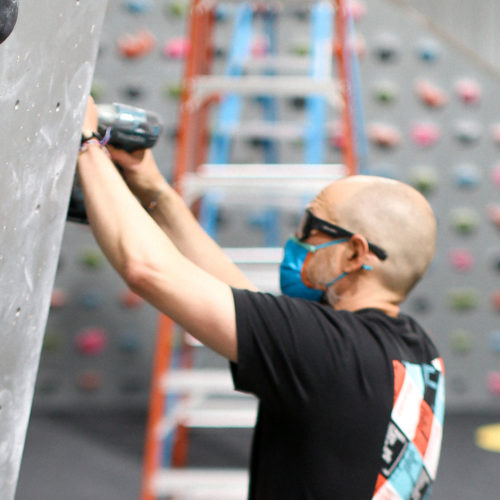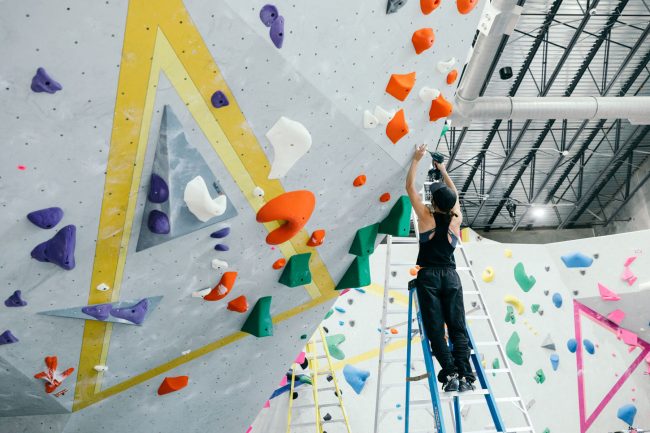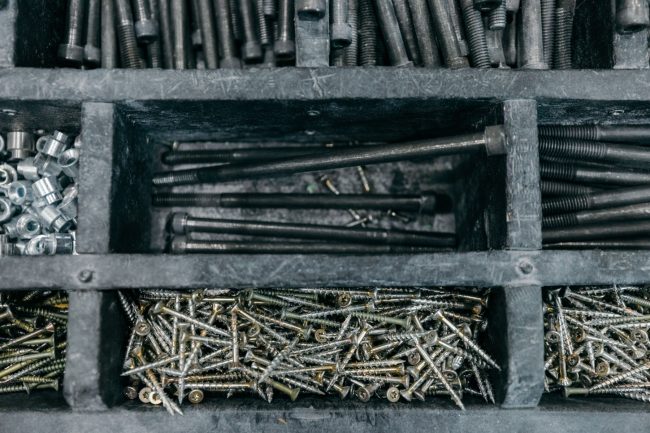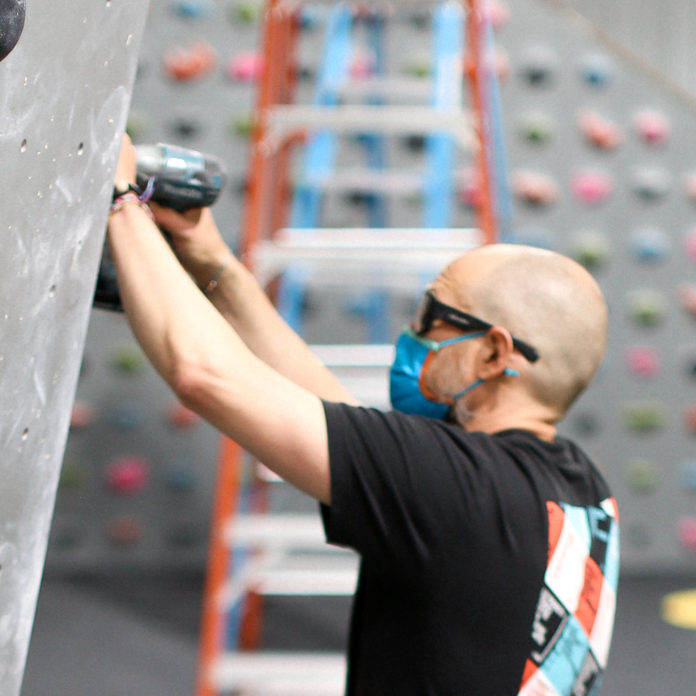Ask a Setter…is an ongoing series that helps routesetters advance their careers and fine-tune their craft by providing advice and tips from the experts. For this first installment, Louie Anderson summarizes a few skills that new setters will need to learn when starting their journey behind the wrench. Got a question about the art of setting you’d like answered? Send us your routesetting question here.

QUESTION: “What skills should a brand-new routesetter learn on Day One?”
ANDERSON: If you are setting in a commercial gym environment, the chances are good that your Head Setter will have some training lined up for you that addresses many of these topics, and USA Climbing provides clinics for various levels of routesetting certification as well. Each facility also has their own preferences when it comes to some of these topics, so don’t be afraid to ask questions to ensure that you’re doing things properly, and as expected. In my opinion though, there are a few things that should become standard practice from Day One.
PPE and Safety: For You and Those Around You
There are lots of ways that you can get hurt while setting. There also lots of Personal Protection Equipment (PPE) items and some general common-sense practices that can be employed to lessen your chance of getting hurt. Ask your Head Setter what the normal practices are in your gym. Many gyms will provide safety gear for you, but you can always buy your own if they don’t.
Eyes
Eye protection is a big one for me. While most setting activities don’t necessarily expose your eyes to danger, installing holds above your head, tapping bad T-nuts, running bad bolts through a die, or any type of grinding or sanding can throw debris into your eye faster than you can possibly imagine. I’ve had two bad eye injuries due to setting, both requiring surgery, and both could have been prevented with proper eye protection.
Ears
If you are on a large team, or work in a small facility, the sound of multiple impact drivers can really add up to being very loud. A lot of setters choose to wear ear plugs, or full-coverage earmuffs to lessen the noise and possible damage to your ears over time. If you choose to do so, be extra aware of what’s happening around you as either of these options can make it more challenging to communicate with others, or to hear possible warnings.

Ladders
Setting often involves the use of ladders. Make sure you use the appropriate length of ladder for your setting environment. It should be long enough so that you are not standing on the top few rungs. If using a very large ladder, consider asking for help when moving it. There’s no pride in handling a big ladder on your own if it results in a dropped ladder that could easily mean injury to others, or damage to whatever it lands on.
Ropes
When setting on a rope, there are countless ways that things can go wrong. Make sure that you seek training from experienced setters, and take the time to learn what to do, and what no to do, to keep yourself safe and working efficiently while on the ropes. The Climbing Wall Association’s work-at-height certification program includes various levels of training and certification, which is a good step for all climbing wall workers to take. Ask your employer or the CWA about certification, and certified providers like the Petzl Training Institute also offer courses.
Proper Tool Usage: Is It Securely Attached?
There’s more to setting than just installing bolts and set screws. You’ll end up using a lot of different tools, for a lot of different tasks. Make sure you learn how to properly use them all, and use the correct one for what you’re planning on doing. There are inherent dangers to just about every tool we setters use. Proper tool usage can avoid or limit these dangers.
Along these lines are selecting the correct bolts and/or screws for the hold you’re installing. Are you using the correct bolt type and length? Is the set screw long enough? Did you use enough set screws on that feature or volume? Did you just snap the screw without realizing it by using your impact at the highest setting, or not releasing the trigger in time? These are all common mistakes that could have detrimental results.
If you’re new to setting, make sure someone is watching over your shoulder for a while, and listen to the advice and training they offer you. It could mean the difference between you, or a climber on the route you set, being injured.

Importance of Working as a Team
Setting can be a lot of fun and a great creative outlet, but it can also be a lot of hard work that can break you down over time. Learn to work well with your setting team. Listen to their advice and be quick to offer yours where it makes sense to do so.
If you hit a road block and aren’t sure how to move forward, or to address a certain issue, ask. Especially when forerunning, relying on and listening to each other usually results in a higher quality of climbing product; something that we should all be aspiring to set. When it comes to heavy lifting and moving ladders and such, help each other out. If you’re up on a rope and forgot something on the ground, ask someone on the ground to get it for you.
Everything you do as a setter will be easier with your teammates helping you – teamwork makes the dream work.

Louie Anderson has been climbing since 1974 and routesetting for over 35 years. He’s a big proponent for education in the setting world, having written The Art of Coursesetting (re-released as Fundamentals of Routesetting). Anderson has also been shaping holds and consulting for gyms for decades. His holds are available at Legacy Ascension, and more information about his services is at louieandersonclimbing.com.
Listen to our podcast with Louie: Revitalizing Routesetting for the Next Generation










